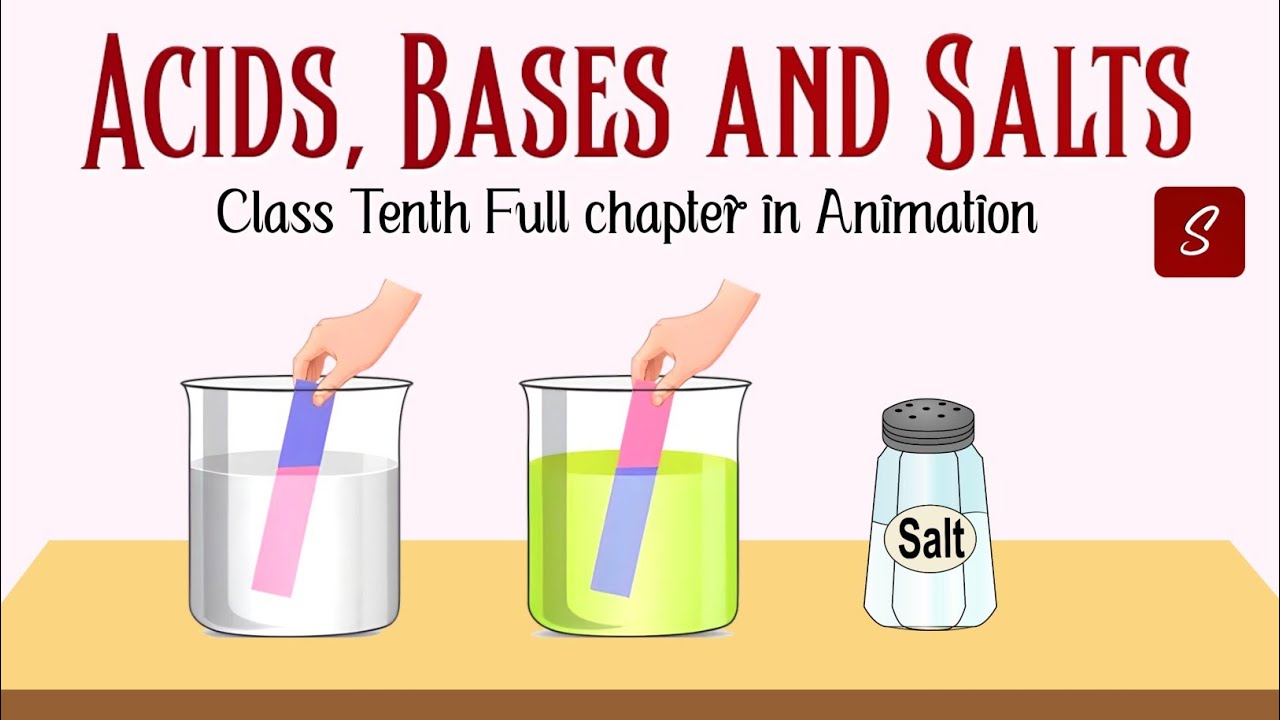Asam Basa Garam - Klasifikasi Materi dan Perubahannya
Summary
TLDRThe transcript explores the significance of acids and bases in everyday life, detailing their presence in various substances such as fruits, cleaning agents, and automotive fluids. It explains the properties of acids, including their sour taste and ability to corrode, as well as the characteristics of bases, which are slippery and bitter. The discussion includes the concept of acid-base neutralization, illustrated by examples like antacids. Additionally, it highlights the environmental impact of acid rain and presents natural and synthetic indicators for identifying acids and bases, showcasing their applications in daily life and industry.
Takeaways
- 😀 Acids and bases are essential chemical compounds widely used in agriculture, health, and laboratory research.
- 😀 Common acids found in daily life include citric acid in citrus fruits, acetic acid in vinegar, and hydrochloric acid in the stomach.
- 😀 Identifying acids can be done through their sour taste, corrosive nature, and ability to turn blue litmus paper red.
- 😀 Acid rain occurs when high levels of sulfur dioxide and nitrogen oxides react with water in the atmosphere, leading to environmental damage.
- 😀 Bases are present in everyday items like soaps, shampoos, and antacids, and they can be identified by their bitter taste, slippery feel, and ability to turn red litmus paper blue.
- 😀 Neutralization reactions between acids and bases produce salts and water, which is essential in various applications including medicine and agriculture.
- 😀 Common salt (sodium chloride) is a widely recognized product of acid-base reactions and is used in food processing and preservation.
- 😀 Natural indicators like turmeric and red cabbage can visually show the presence of acids and bases through color changes.
- 😀 Turmeric turns yellow in acidic solutions and orange in basic solutions, while red cabbage shows red in acidic and green in basic environments.
- 😀 Litmus paper is a standard artificial indicator used to test for acidity and basicity, changing color based on the solution's pH.
Q & A
What are acids and bases, and why are they important in daily life?
-Acids and bases are chemical compounds that play significant roles in various industries, including agriculture, healthcare, and laboratory research.
Can you provide examples of common acids found in everyday life?
-Common acids include citric acid in citrus fruits like oranges and lemons, acetic acid in vinegar, and hydrochloric acid in the stomach.
How can we identify acids?
-Acids can be identified by their sour taste (not to be tasted directly), corrosive nature, and their ability to turn blue litmus paper red.
What is acid rain, and what causes it?
-Acid rain is caused by the reaction of sulfur dioxide (SO2) and nitrogen oxides (NOx) with water in the atmosphere, leading to more acidic rainfall that can damage buildings and ecosystems.
What are some everyday examples of bases?
-Everyday bases include household items like soap, shampoo, and baking soda.
What characteristics help identify bases?
-Bases can be identified by their bitter taste (not to be tasted directly), slippery feel, and their ability to turn red litmus paper blue.
What is a neutralization reaction?
-A neutralization reaction occurs when an acid and a base react to form salt and water, which is crucial for applications like antacid medications.
What is a well-known example of a salt, and how is it formed?
-Sodium chloride, or table salt, is a well-known salt formed from the reaction of hydrochloric acid and sodium hydroxide.
What are indicators, and how do they function?
-Indicators are substances that change color in response to acidity or alkalinity, helping to identify whether a solution is acidic or basic.
Can you name some natural indicators and their color changes?
-Natural indicators include turmeric, which turns yellow in acid and orange in base, and red cabbage, which turns red in acid and green in base.
Outlines

This section is available to paid users only. Please upgrade to access this part.
Upgrade NowMindmap

This section is available to paid users only. Please upgrade to access this part.
Upgrade NowKeywords

This section is available to paid users only. Please upgrade to access this part.
Upgrade NowHighlights

This section is available to paid users only. Please upgrade to access this part.
Upgrade NowTranscripts

This section is available to paid users only. Please upgrade to access this part.
Upgrade NowBrowse More Related Video

Säuren und Basen I musstewissen Chemie

Acid and Base | Acids, Bases & pH | Video for Kids

ACIDS, BASES AND SALTS in 1 Shot FULL CHAPTER IN ANIMATION ||| NCERT SCIENCE Class 10th Chapter 2

Acids, Bases and Salts Class 10 Full Chapter (Animation) | Class 10 Science Chapter 2 | CBSE | NCERT

What Are Acids & Bases? | Chemistry Basics

Asam dan Basa dalam kehidupan sehari-hari | Sobat Kimia
5.0 / 5 (0 votes)